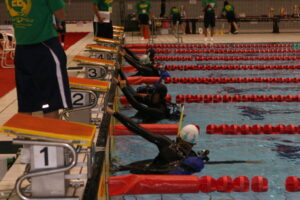
PRESSURE GAUGE
Mares Mission 1 SPG 357

As a kit reviewer, I commonly hit the water in a set of kit that’s completely unfamiliar to me.
Although I was also using a gas-integrated computer on that test trip, having a dial pressure gauge was reassuring.
That’s because, on first dives with a test computer, I’m not always sure what the read-outs are telling me…
The Design
The Mares Mission 1 has a 40mm-diameter dial. The main body is brass, although you can’t see this touch of quality because it’s protected from shock by a sturdy rubber console.
The main dial is phosphorescent white with black needle and indices. There’s a red caution zone from 50 bar to zero, plus two other coloured zones between 50-200 and 200-450 bar.
Although rated to 450, gauges are meant to have a 25% overspill safety factor, so it’s really for use with 300 bar cylinders that have been “generously” filled.
As required by law, a relief port is built in. This vents automatically and safely if the internal bourdon tube fails and high-pressure air leaks out of it.
The most common cause for this problem with SPGs of any brand is a wet air-fill, or letting water into your first stage.
Appeared in DIVER June 2020
Under Water
I found the Mission 1 very easy to read under water, even though I should (but don’t) have reading lenses in my mask, and light levels were low.
But what was really nice was that Mares has provided two attachment-points for clipping off the Mission 1.
The eyelets are quite large, so a medium bolt-snap connected perfectly. I found that using the lower eyelet, which rotates around the hose, and a bolt-snap to clip it to a shoulder D-ring on several test BCs placed the SPG in my ideal line of sight.
So air-checks could be at a glance, and hands free.
Conclusion
What more can you ask of an SPG? Highly recommended.
The post DIVER TEST: Mares Mission 1 SPG 357 appeared first on Divernet.
Read More Diver Tests, Gear, Other Dive Gear/Accessories Divernet















